Inter-Korean summit: Fancy a tour of ‘the scariest place on Earth’?
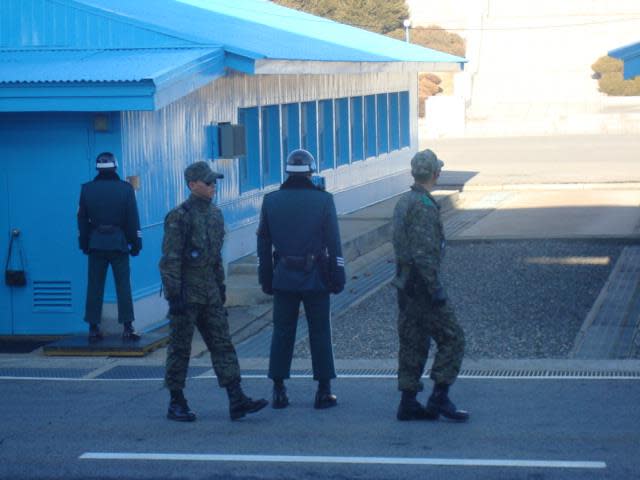
A steely-looking US military officer scrutinised a group of visitors in the Joint Security Area (JSA) before warning them to obey instructions as they walked around the most heavily guarded border in the world.
His presence in the JSA within the 250-km long Korean Demilitarised Zone (DMZ) – one of nearly 30,000 American troops stationed in South Korea – in early 2013 was a stark reminder that the two Koreas were still technically in a state of war, almost 60 years after an armistice was signed in the truce village of Panmunjom on 27 July 1953 to suspend hostilities in the Korean War (1950-1953).
Millions of civilians and soldiers died during the war fought between South Korea and US-led United Nations (UN) forces on one side, and North Korea and China on the other side. Close to a thousand were killed between 1953 and 1999 along the DMZ, including two American officers who were axed to death by North Korean soldiers near the so-called “Bridge of No Return” in the JSA in 1976. Former US President Bill Clinton described the DMZ as “the scariest place on Earth” before his visit to the border in 1993.
This reporter was among the visitors who took a two-hour bus ride from a hotel in Seoul on 2 February 2013 to tour the JSA and other sites along the DMZ, one of the last relics of the Cold War. Troops on both sides of the divided peninsula have been drilled incessantly over the decades to swiftly respond to the slightest military provocation.
Prior to the tour, I had to sign a Visitor Declaration, which stated that the UN Command, the US and South Korea “cannot guarantee the safety of visitors and may not be held accountable in the event of a hostile enemy act”. Visitors were advised to identify the North Korean soldiers stationed on the northern side of the JSA by their “brown or olive drab” uniforms. They were warned not to “point, make gestures, or expressions like scoffing, abnormal action which could be used by the North Korean side as propaganda material against the UN Command,” according to the declaration. They couldn’t even wave at the North Korean soldiers as it was “strictly prohibited”.
The JSA was catapulted into the global limelight last Friday morning (27 April) when North Korean leader Kim Jong-un made the historic step of walking across the Military Demarcation Line (MDL) to shake hands with South Korean President Moon Jae-in. The third ruler of the Kim dynasty was the first North Korean leader to set foot on South Korean soil since the Korean War. During their historic summit in the JSA, Kim and Moon pledged to end the war by signing a peace treaty later this year and commit to denuclearisation in the two Koreas.
Given the military-sensitive nature of the DMZ, visitors who are keen to visit the border have to book either a half-day or full-day trip with one of several Korean travel companies approved by the authorities to organise the tours.
The star attraction of the tour was the United Nations Command Military Armistice Commission (UNCMAC) building – painted in the distinctive blue colour of the UN – where both Koreas discuss DMZ-related and other security issues. Before entering the building with other visitors, I spotted two South Korean soldiers in grey UN uniforms, helmets and sunglasses assuming a taekwondo stance and staring in the direction of the Panmungak building on the North side, where one North Korean solider stood in front of a door.
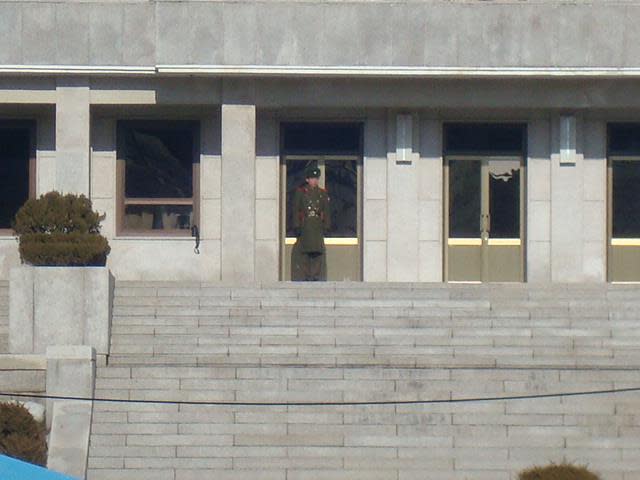
The South Korean soldiers were standing barely a few metres away from where Kim walked from the Panmungak building and crossed over from the sand path by the Military Demarcation Line in the North to greet Moon on the gravel path in the South.
Straddling along the border, the UNCMAC building is the only place in South Korea where civilian visitors could walk over to the North without fear of being abducted or shot by North Korean soldiers.
One visitor pointed to a South Korean soldier standing at attention inside the building and was heard asking if he was a mannequin. In my eagerness to “defect” to the North, I was walking on the same side of the soldier when he suddenly thrust his gloved right hand forward to stop my advance and gestured me to cross over from the other side of the UN conference table.
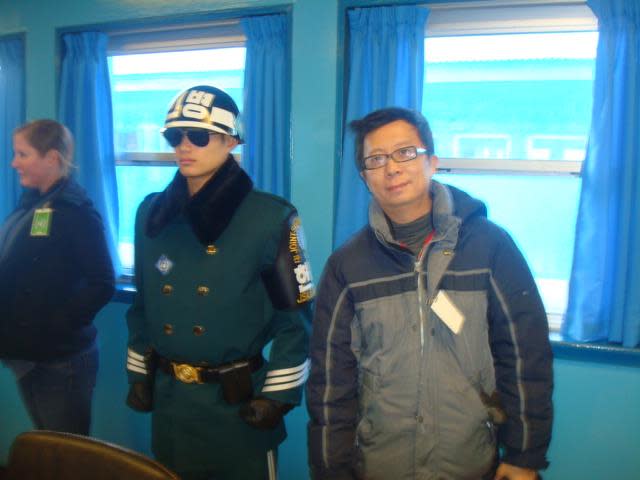
Secret tunnels dug by North Koreans
After the war, the North Koreans plotted on several occasions to re-invade the South. Among their plans was the digging of tunnels under the DMZ, purportedly to move troops and weapons from the North into the South. I had the chance to visit the Third Tunnel, one of four tunnels that were unearthed by the South over the years.
Discovered in 1978, the 1.7km long tunnel was two metres in height and 2 metres in width – large enough for 30,000 North Korean troops, and their weapons and vehicles to pass through in an hour during an invasion. As the helmeted visitors were transported into the tunnel via a motor rail, I felt a mix sense of claustrophobia and astonishment that the North Koreans could conjure such an insidiously bold plan.
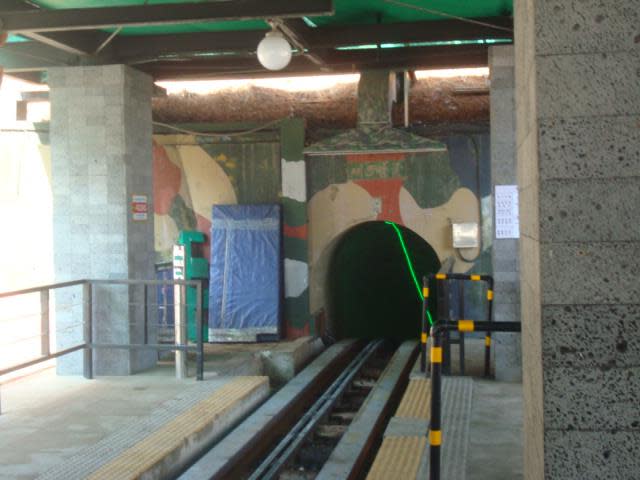
From the JSA, the visitors were only able to get a limited view of the North but from the Dorasan Observatory, they could get a broader view across the DMZ through a telescope. Among the more prominent places they could spot were the Propaganda Village, a farmland area, and the Kaesong Industrial Complex.
Another key attraction at the DMZ was the Dorasan Station, formerly a stop on a railway line to Kaesong. For a brief period from 2007 to 2008, there were more than 1 million visitors crossing over the DMZ to the North until a South Korean tourist who was visiting a resort was shot to death in July 2008 and the line was closed.
An exhibit in the JSA on the “Korean axe murder” showed how one of the most serious incidents along the DMZ after the war happened on 18 August 1976. Captain Arthur Bonifas and First Lieutenant Mark Barrett were part of a UN team assigned to cut a poplar tree located on the south side of the MDL, which was blocking the view of UN observers. The American officers were murdered by a group of North Korean soldiers who had attempted to stop the UN team from cutting the tree, as shown by the exhibit’s figurines depicting the incident.
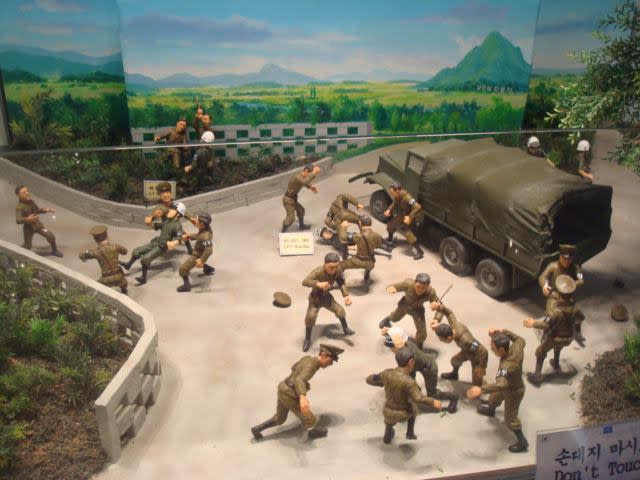
Just three days after the murder, a group of South Korean Special Force soldiers was activated to protect several engineers who were trimming the tree, leaving just a stump in an act of defiance against the North. While the tree-cutting operation was going on, troops on both sides of the DMZ were mobilised – even a US air base in Japan was placed on high alert.
Among the South Korean soldiers on duty was none other than Moon. The irony was perhaps not lost on him when he planted a pine tree with a marker that reads “planting peace and prosperity” on the border together with Kim during their summit, almost 42 years after the fate of another tree threatened to hurl the two Koreas into another major war.
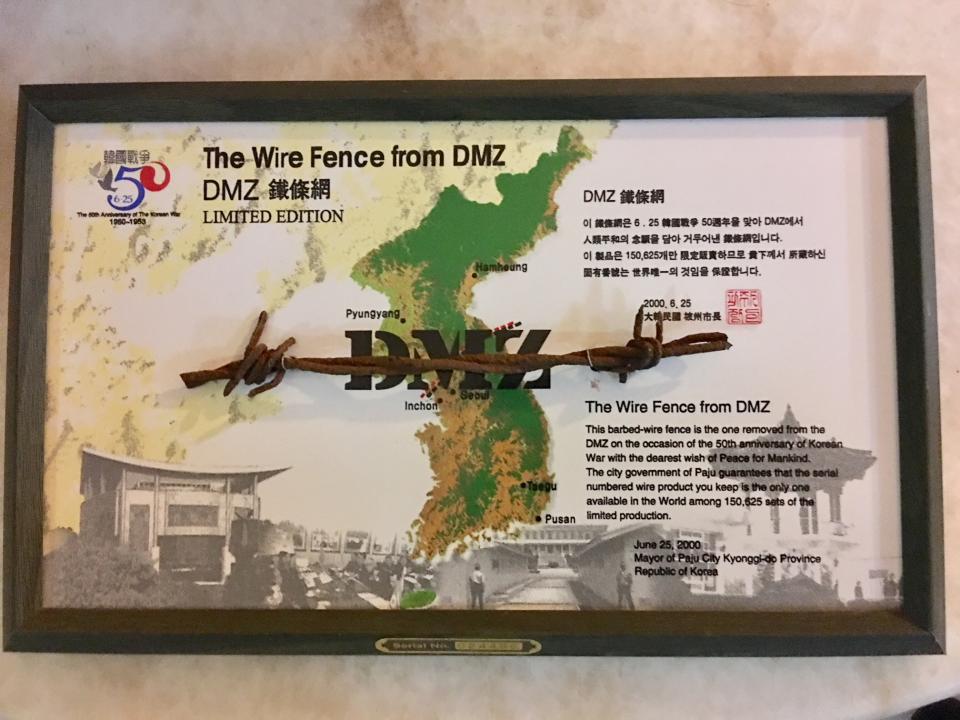
After the tour, I bought a book on Panmunjom and a piece of the barbed wire fence along the DMZ that was partially removed to commemorate in 2000 the 50th anniversary of the start of the Korean War. Despite the momentous events of last Friday, the barbed wire piece is a poignant symbol of the painful division of the Korean people, and that the yearning of many for peaceful reunification of the peninsula remains forlorn and enmeshed in a complex web of political minefields.


